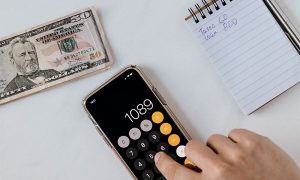This is a three part series. Read part one and part three for complete coverage.
Rising student loan debt isn’t the only education story to watch as a new school year begins. In a June 2017 report, the Consumer Financial Protection Bureau (CFPB) noted that almost all student loans eligible for forgiveness were rejected, because of problems caused by student loan servicing companies hired by the U.S. Department of Education (DOE).
But that’s not the only financial pressure facing today’s college students and new graduates. High fees on some college-sponsored bank accounts and an uptick in credit card use add to a cumulative debt burden that threatens the financial well-being and future of Millennials and the next generation, your GenZ readers. That’s the larger story here for an enterprising business reporter or team to connect, beginning with these three questions on student loan forgiveness and repayment plans:
Why is the path to student loan forgiveness so unforgiving?
Because the path is unclear and keeps changing direction. Ask readers representing different careers about their experiences with student loan forgiveness to round out this story. Before you head into this maze, read this backgrounder from debt.org.
The Public Service Loan Forgiveness (PSLP) program signed into law by President George W. Bush in 2007 encouraged students to work as teachers, nurses, doctors, lawyers and military in public service jobs. In 2010, Congress began adding and adjusting repayment terms. Instead of equal payments paid over 10 years, plans morphed into repayment plans based on 10% or 15% of income; later versions allowed borrowers to “Pay As You Earn” (PAYE). In June, the American Federation of Teachers (AFT) sued DOE for misleading information given by servicers over the confusion created by income-based plans.
Should students count on student loan forgiveness in the future?
One in four Americans holds a public service job and has an average loan balance of about $90,000 due to master’s degrees they are pursuing. Thatdoesn’t include President Trump’s recent decision to agree with state attorneysgeneral and forgive the student debt of 42,000 permanently disabled veterans,which could add $1.36 billion.
Can Americans afford to forgive student debt in the future? As of March 2019, over half of $870 billion in loans from the federal government were certified for forgiveness, and the numbers of those who qualify (currently one million student borrowers) keeps growing. Talk to a state education official and your state’s attorney general.
Where can students find good advice on repaying their loans?
Prep yourself with information from the Consumer Financial Protection Bureau’s website, then do your own online search to see what young readers experience when they search for information. Is the criticism reported justified, that the DOE’s loan servicers aren’t all that helpful on offering repayment advice? You’ll need students with current loans and an ID to find out. Invite them to join your reporting team.
Studentloanhero.org offers information and calculators with multiple repayment options. Andy Josuweit, who faced $74,000 in student loans that ballooned to $104,000, founded the site in 2014 after figuring out the answers to his questions. Also check out credit counseling agencies, which offer free counseling, and talk to a few student loan consultants, too. When is it worth it to hire one?
Next: Learning to control an early habit for credit.











